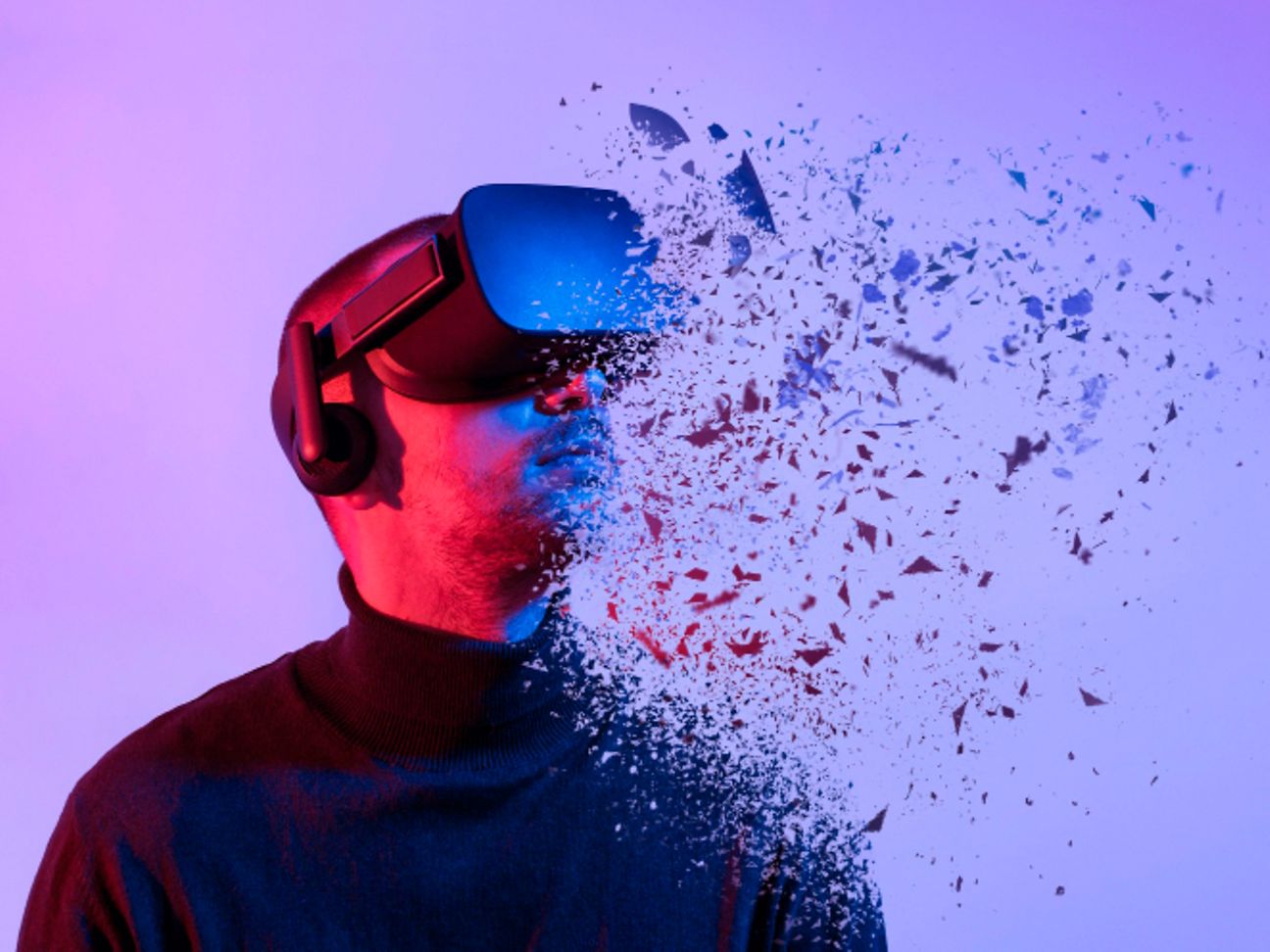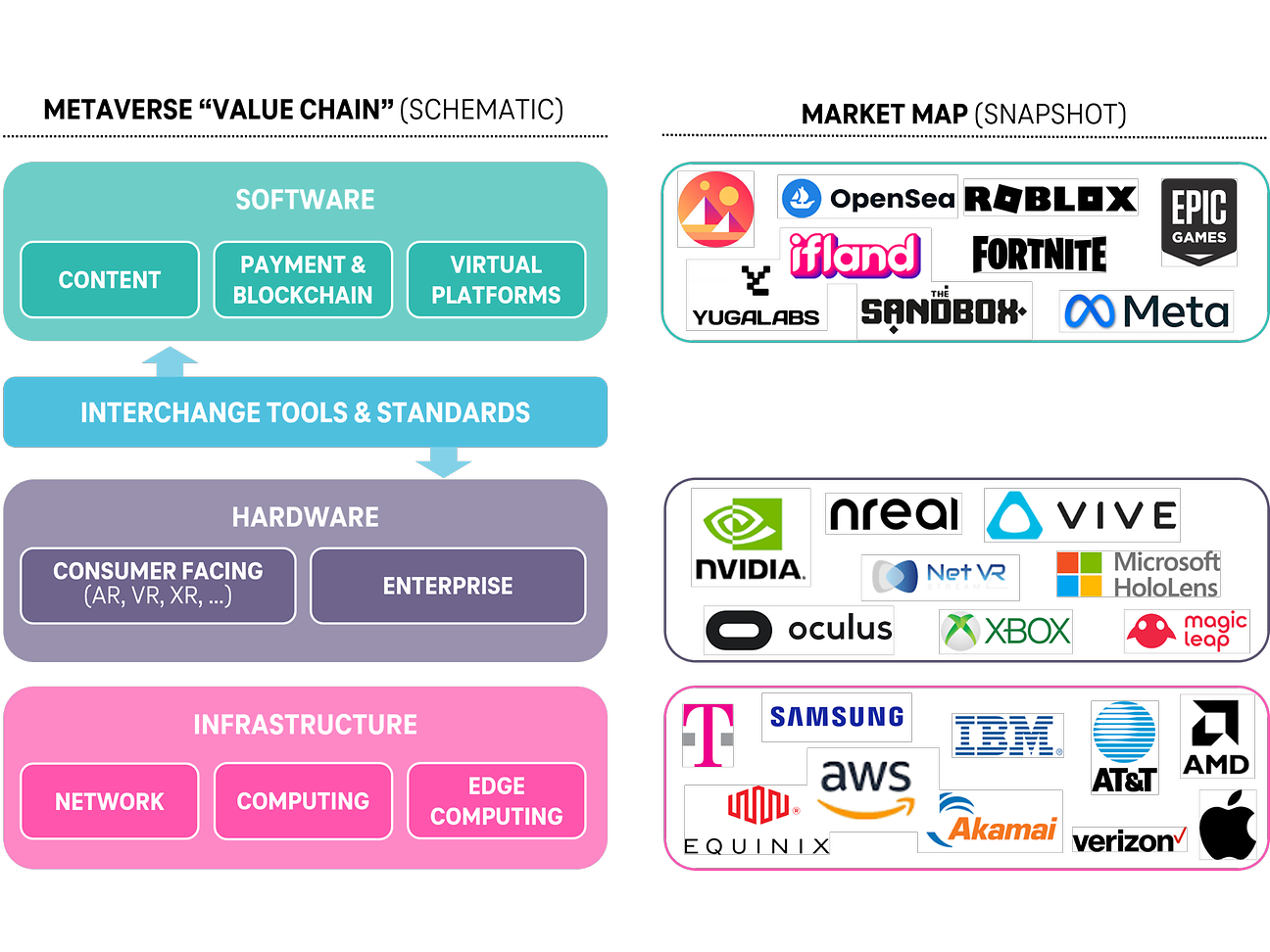Metaverse: Not the type of hype that business leaders should ignore
The metaverse appears to be the next big thing. But what is really behind the idea of a decentralized online universe in which multiple virtual worlds and parts of the physical world merge to create borderless, expanded realities for users and new business models for companies? Even if much of it sounds like inflated tech hype, it also holds business potential – especially for telcos.
For fans of gaming, fashion and music, the metaverse has already become a reality: Digital shoes from the creative agency RTFKT Studios are so popular that Nike decided to buy the entire company without further ado and is now investing in online fashion. Musician Travis Scott rapped live for several million viewers on the metaverse platform of the online game Fortnite. The 8-year-old son of our colleague at Deutsche Telekom meets his friends virtually in Roblox`s metaverse to play games and discuss life, every weekend. And that is not all: Various companies have set up digital offices in the metaverse, where employees can meet and work together. Decentralized exchanges allow users of online games to trade items with each other or even convert coins into real life assets . Domino's Pizza, Samsung and other brands are present with shops and real-estate on metaverse platforms ... This trend has already picked up speed.
The metaverse and its players
The metaverse can be thought of as a next-generation immersive internet – in a sense, users immerse themselves in it, via virtual interfaces or augmented reality interfaces. With their digital avatars, they can move freely in persistent online worlds to shop, play, communicate, get information and do a thousand other things without being restricted by the services offered by individual platforms.
This is because an important aspect of the metaverse is its shift towards decentralized structure, which negates the boundaries of today's closed platforms ("walled gardens"). Such approaches have already been coined using the term Web 3.0. Many interoperable metaverses thus become possible, with open interfaces and cryptographic wallets consisting of a defined identity and universal payment options. Non-fungible tokens (NFTs), i.e. unique tokens based on blockchain technology, create individual assets that can be allocated to specific individuals – just like real objects. NFTs thus complement cryptocurrencies such as Bitcoin and make it possible to own virtual objects.
To enter the metaverse, it is necessary to use certain interfaces. Virtual reality (VR) systems, such as VR goggles, are already well-developed today and can be used in a consumer-friendly way – an important push for the development of the metaverse. But to really connect real and virtual worlds, more is needed. Augmented reality (AR), for example: Here, virtual elements are added to the real world, creating a seamless transition that merges both.
Increased revenues and exciting use cases
Forecasts say that the year 2023 could already bring the breakthrough for the metaverse. Market prospects and growth figures are quite impressive: For 2022, Bloomberg expects a global market volume of 670 billion US dollars, in 2024 it could be 783 billion dollars, and the trend continues to point upwards.
The revenue potential is just as diverse as the players that are already active in the metaverse today. The basis for it is provided by infrastructure providers that offer technologies such as 5G, Wi-Fi, sensors and also VR headsets as well as AR goggles and the like. Since the metaverse is decentralized, companies that use blockchain technology or provide microservices and edge computing are involved. Frameworks for modelling these virtual worlds start from there. With the help of 3D engines and various design tools, virtual worlds are created such as the 3D platform "Decentraland" or game worlds like "The Sandbox" and "Roblox", all of which are supported by well-known companies. Search engine providers, social networks, app stores and the like help users navigate and, finally, game providers, shop owners from all sectors and event organizers provide experiences of all kinds in the metaverse. But that is not all: Developers of payment methods, e-commerce software and identity management as well as financial advisors also find new areas to employ their services in the metaverse.
Helping to shape the metaverse from the very beginning
What does this mean for telcos in general? Even if there are no clear use cases for the core business yet, the Metaverse is an exciting, highly innovative environment to improve customer experience and retention. With modern infrastructure such as 5G and fiber, telcos naturally provide the foundation for, for example, fluid XR interaction (Extended Reality) in the Metaverse. They also have strong partnerships with hardware vendors, helping to shape future consumer devices, for example, to ensure an optimal experience on the relevant networks. Telcos can also play an important role in developing standardization and monetization concepts, such as cross-platform identity management.
In the short term, the current hype around the metaverse can be used to strengthen the brand, inspire new customers and make internal workflows more efficient. For example, digital avatars are already working for telcos in sales and service, and campaigns are launched on the Roblox gaming platform to attract customers. In addition, the brand can be further strengthened with stores in the metaverse, NFTs, crypto-payment, and attractive content (sports broadcasts, live events). In the telco environment, AR Field Advisors can support Technical Field Service in the future.
Ultimately, the hype is a bet which the telcos must play - the question is with what stakes. The large investment required for fiber rollout or mobile spectrum will prevent telcos from investing in this bet to the same extent as other companies. What is needed here is a good feeling for which parts to bet on with the limited resources and with whom to enter into strategic partnerships so as not to end up as a pure "commodity infrastructure provider" in the end.
A new universe is emerging
It is not only multiple worlds that merge in the metaverse, but also a hype that merges with real business opportunities. Rarely has there been so much room for innovation and disruption, for new business models and customer interactions – and we certainly want to be part of it. Especially now that the metaverse is just emerging, it is important to explore opportunities, to position ourselves and to find the right balance between mere excitement and true potential. Deutsche Telekom's many first metaverse steps are already promising.


